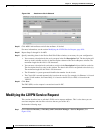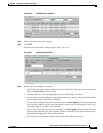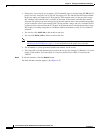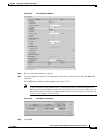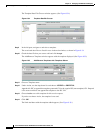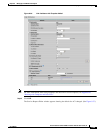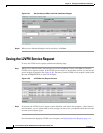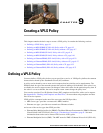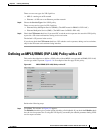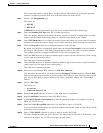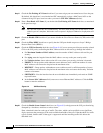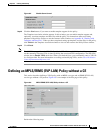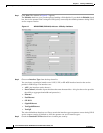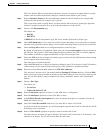
9-2
Cisco IP Solution Center L2VPN and Carrier Ethernet User Guide, 6.0
OL-21636-01
Chapter 9 Creating a VPLS Policy
Defining a VPLS Policy
A policy is a template of most of the parameters needed to define a VPLS service request. After you
define it, a VPLS policy can be used by all the VPLS service requests that share a common set of
characteristics.
You create a new VPLS policy whenever you create a new type of service or a service with different
parameters. VPLS policy creation is normally performed by experienced network engineers.
To define a VPLS policy in the Cisco IP Solution Center (ISC), perform the following steps.
Step 1 Choose Service Design > Policies.
The Policies window appears.
Step 2 Click Create.
Step 3 Choose VPLS Policy.
The VPLS Policy Editor window appears. (See Figure 9-1.)
Figure 9-1 Creating a VPLS Policy
Step 4 Enter a Policy Name for the VPLS policy.
Step 5 Choose the Policy Owner for the VPLS policy.
There are three types of VPLS policy ownership:
• Customer ownership
• Provider ownership
• Global ownership—Any service operator can make use of this VPLS policy.
This ownership has relevance when the ISC Role-Based Access Control (RBAC) comes into play. For
example, a VPLS policy that is customer owned can only be seen by operators who are allowed to work
on this customer-owned policy.
Similarly, operators who are allowed to work on a provider’s network can view, use, and deploy a
particular provider-owned policy.
Step 6 Click Select to choose the owner of the VPLS policy.
The policy owner was established when you created customers or providers during ISC setup. If the
ownership is global, the Select function does not appear.
Step 7 Choose the Core Type of the VPLS policy.



